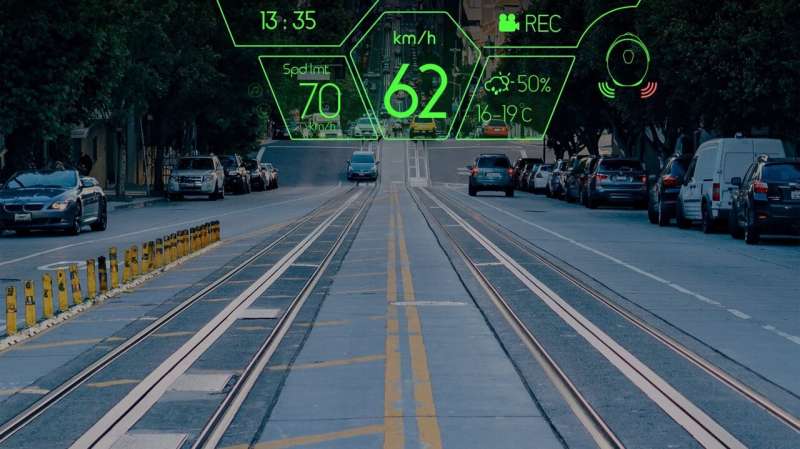Augmented reality technologies have transformed how we interact with the digital world, overlaying virtual elements onto our physical environment in increasingly sophisticated ways. Behind these magical-seeming experiences lie complex AI systems making countless real-time decisions that shape what users see and experience.
Yet many of these systems operate as “black boxes” – their decision-making processes remain opaque even to their developers. When an AR application recognizes an object, determines user intent, or decides what information to display, users typically have no visibility into how or why these determinations were made.
This lack of transparency creates practical problems in everyday use. Users can’t effectively provide feedback when they don’t understand why an AR system behaves in certain ways. When errors occur, users feel frustrated rather than empowered to correct or improve the system.
For businesses deploying AR solutions, black box systems create additional risks. Explaining how decisions are made becomes nearly impossible, complicating regulatory compliance and creating potential liability issues when mistakes occur.
Understanding Explainable AI
Explainable AI (XAI) aims to solve these problems by creating artificial intelligence systems that humans can understand and trust. Rather than simply providing outputs, explainable AI models reveal the reasoning behind their decisions, making their inner workings transparent and interpretable.
This transparency takes different forms depending on the application. In some cases, it involves revealing which input factors most influenced a particular outcome. In others, it means generating natural language explanations that describe the decision-making process in human terms.
The core principle remains consistent: users should be able to understand not just what the AI decided, but why it made that determination and how confident it is in its conclusion.
For augmented reality applications, which often blend AI decisions seamlessly into our perception of the world, this explainability becomes particularly crucial. As users increasingly rely on AR systems for navigation, information retrieval, and even critical decision support, understanding the reasoning behind these augmentations becomes essential.
Explainable AI Methods in AR Applications
Several approaches to explainable AI have proven particularly valuable in augmented reality contexts. Visual attribution techniques highlight which parts of a scene influenced the AR system’s decisions. When an AR application identifies an object, for instance, heat maps can show exactly which visual features led to that identification.
Confidence indicators communicate the system’s certainty about its decisions. Rather than presenting all augmentations with equal visual weight, AR interfaces can use visual cues or explicit indicators to distinguish between high-confidence and lower-confidence determinations.
Decision trees and rule-based systems provide inherently understandable structures that users can follow. While these approaches may sacrifice some performance compared to more complex models, their transparency creates significant advantages for applications where understanding the decision process matters more than squeezing out marginal performance improvements.
Counterfactual explanations show users what would need to change for the system to reach a different conclusion. This approach helps users understand decision boundaries and can be particularly helpful in educational AR applications.
To explore more innovative approaches to AR marketing and user experience design, visit our comprehensive resource hub at ARMarketingTips.com.
Benefits of Explainable AR Systems
Transparent AR systems that incorporate explainable AI create numerous advantages for both users and businesses. Trust building represents perhaps the most significant benefit. When users understand how and why AR systems make decisions, they develop greater confidence in the technology and feel more comfortable relying on it in important situations.
Error correction improves substantially with explainable systems. When users can see why an AR application made a particular decision, they can provide meaningful feedback that helps improve the system. Rather than simply reporting that something is wrong, users can identify specific issues in the decision-making process.
User control increases as transparency grows. Explainable systems allow users to adjust parameters or provide additional context when they disagree with system decisions. This collaboration between human and AI creates more satisfying experiences than opaque systems that users must simply accept or reject.
Regulatory compliance becomes more manageable with explainable AI. As regulations increasingly demand transparency in algorithmic decision-making, AR applications built on explainable foundations can more easily demonstrate compliance with these requirements.
Educational value emerges naturally from transparent systems. AR applications that explain their reasoning can teach users about the subjects they analyze, providing not just conclusions but insights into how those conclusions were reached.
Real-World Applications
Explainable AI is transforming numerous AR application areas. Medical AR applications use explainable AI to show clinicians which visual features in medical imaging led to particular diagnoses or treatment recommendations. This transparency allows healthcare professionals to validate AI suggestions against their own expertise rather than simply accepting or rejecting system outputs.
Retail AR experiences benefit from explaining product recommendations. When an AR shopping application suggests items based on user preferences or environment, revealing the reasoning behind these suggestions helps users refine their shopping experience and builds trust in the recommendation system.
Industrial maintenance applications use explainable AR to guide technicians through complex repair procedures. When the system suggests particular steps or identifies components, explaining the reasoning helps technicians integrate the AI guidance with their own knowledge and experience.
Navigation systems that explain routing decisions help users understand why particular paths were chosen. This transparency becomes particularly valuable when routes differ from user expectations, preventing frustration and building confidence in the navigation guidance.
Educational AR applications use explainability to enhance learning outcomes. By showing students not just what to learn but how conclusions are reached, these applications teach critical thinking alongside subject-specific knowledge.
Implementation Challenges
Despite its benefits, implementing explainable AI in AR systems presents several challenges. Performance tradeoffs often exist between model accuracy and explainability. The most accurate deep learning models typically offer the least transparency, creating difficult decisions about whether to prioritize performance or explainability.
Explanation complexity poses another challenge. Truly comprehensive explanations of complex AI decisions might overwhelm users with technical details, while oversimplified explanations might miss crucial nuance. Finding the right level of detail requires careful user experience design.
Real-time constraints affect AR applications particularly strongly. Generating explanations adds computational overhead, potentially creating latency that disrupts the immediacy essential to compelling AR experiences. Balancing explanation depth against performance requirements remains an ongoing challenge.
User differences complicate explanation design. Technical experts might benefit from detailed explanations that would confuse non-specialists. Creating explanations that adapt to different user knowledge levels requires sophisticated user modeling and interface design.
Integration with existing AR frameworks presents practical implementation challenges. Many current AR development platforms weren’t designed with explainability in mind, requiring additional engineering to incorporate transparent AI components.
Design Principles for Explainable AR
Several design principles can guide the development of more transparent AR experiences. Progressive disclosure provides basic explanations by default while allowing interested users to access deeper levels of detail. This approach accommodates different user information needs without overwhelming casual users.
Multimodal explanations leverage the full potential of the AR medium. Visual cues can highlight important features, audio explanations can provide context, and haptic feedback can direct attention – all working together to create intuitive understanding of system decisions.
Context sensitivity ensures explanations remain relevant to the specific situation and user task. Different contexts require different kinds of explanations, from quick confidence indicators during fast-paced interactions to more detailed reasoning during contemplative decision-making.
User control over explanation depth and frequency empowers individuals to customize the transparency level to their needs. Some users might want constant visibility into system reasoning, while others prefer explanations only when unexpected results occur.
Consistency across explanation types helps users build mental models of how the system works. When similar decisions are explained in similar ways, users can more easily transfer their understanding across different situations and applications.
The Future of Explainable AR
As AR technology continues evolving, several trends will shape the future of explainable systems. Personalized explanations will adapt to individual users’ knowledge, preferences, and learning styles. These tailored explanations will maximize understanding while minimizing cognitive load.
Collaborative explanation generation will incorporate user feedback to improve future explanations. As systems learn which explanations users find most helpful, they’ll refine their communication approaches to better meet user needs.
Standardized explanation frameworks will emerge as the field matures, creating consistent approaches across different AR platforms and applications. These standards will simplify development while creating more predictable experiences for users moving between different AR systems.
Regulatory developments will likely drive increased adoption of explainable AI in AR applications. As regulations around algorithmic transparency continue expanding, building explainability into AR systems will become a compliance requirement rather than just a best practice.
Cross-modal explanation techniques will leverage the unique capabilities of different sensory channels. Visual explanations might work best for spatial decisions, while verbal explanations might better communicate procedural reasoning.
Getting Started with Explainable AR
Organizations looking to implement more transparent AR experiences should begin with a clear assessment of their explainability needs. Different applications require different levels of transparency depending on their purpose, audience, and potential impact.
Hybrid model approaches often provide practical compromises between performance and explainability. By combining high-performance black box components with more transparent models for critical decisions, developers can balance competing priorities without sacrificing essential functionality.
User testing becomes particularly important when designing explanations. What seems clear to developers might confuse actual users, making iterative testing essential to creating truly understandable explanations.
Starting small allows organizations to build experience with explainable systems before tackling more complex applications. Simple explainability features in non-critical applications provide valuable learning opportunities with minimal risk.
Cross-functional teams combining technical AI expertise with UX design skills and domain knowledge typically create the most effective explainable AR systems. This collaborative approach ensures explanations are technically accurate, usable, and relevant to the application context.
Conclusion
Explainable AI represents a critical evolution in augmented reality technology, transforming mysterious black box systems into transparent partners that users can understand and trust. This transparency addresses fundamental limitations that have restricted AR adoption in sensitive domains and complex decision-making contexts.
As augmented reality increasingly shapes how we perceive and interact with the world, the transparency of these systems becomes not just a technical consideration but an ethical imperative. Users deserve to understand the invisible algorithms that increasingly influence their perception and decisions.
Organizations that embrace explainable approaches to AR now will not only build greater user trust but position themselves ahead of emerging regulatory requirements and changing consumer expectations. The future of AR belongs to systems that don’t just augment reality but do so in ways users can understand, trust, and control.





